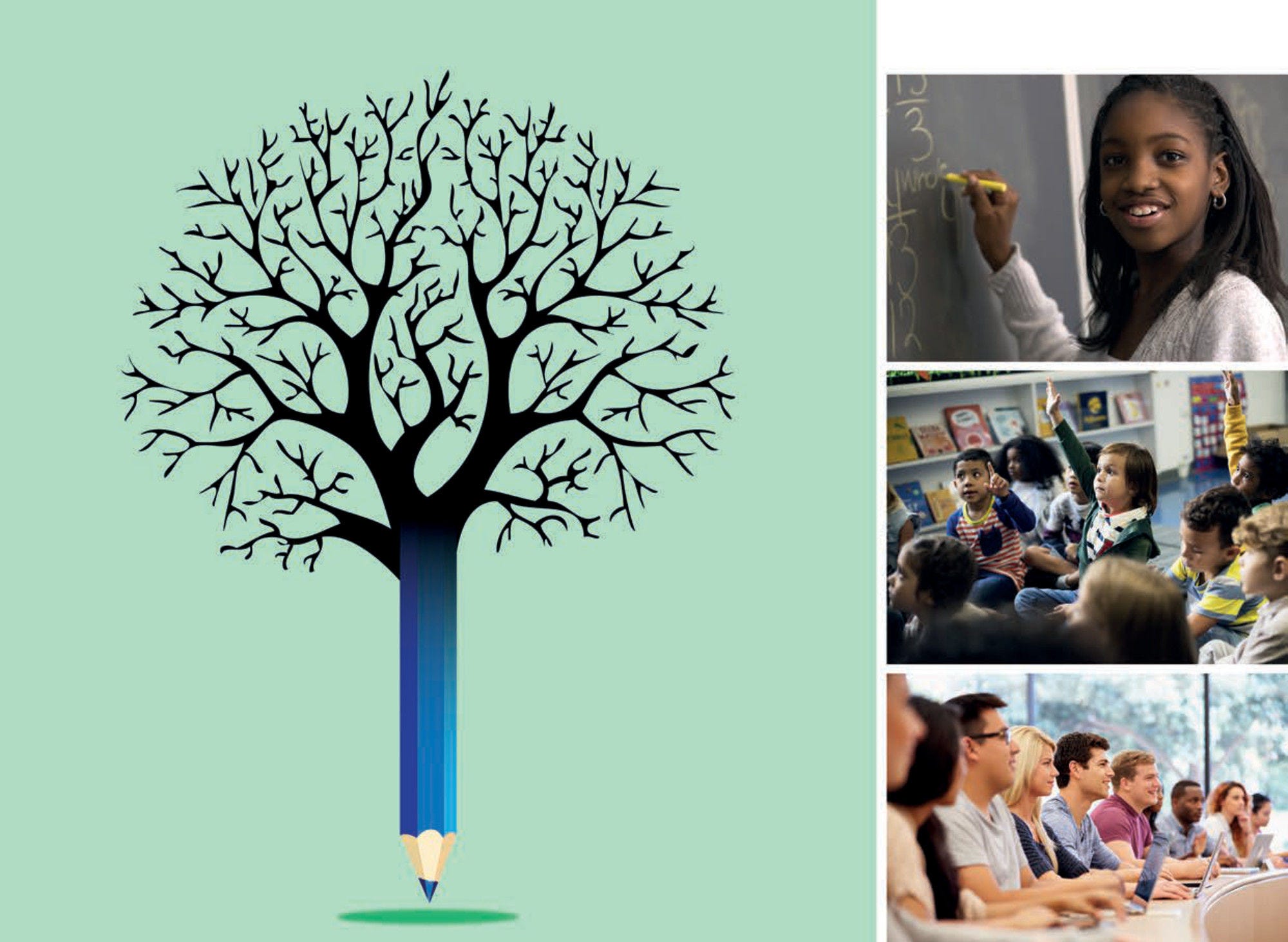Taking the perspective of institutions and the system, Education Policy Outlook 2019: Working Together to Help Students Achieve their Potential, analyses the evolution of key education priorities and key education policies in 43 education systems. It compares more recent developments in education policy ecosystems (mainly between 2015 and 2019) with various education policies adopted between 2008 and 2014. This report includes around 460 education policy developments (with evidence of progress or impact for over 200 of them) spanning from early childhood education and care to higher education and lifelong learning on topics related to school improvement, evaluation and assessment, governance and funding. It looks into “what is being done”, as well as “why and how it works” to help education systems gain better understanding of how policies can have greater opportunities of success in their specific contexts.
Education Policy Outlook 2019

Abstract
Executive Summary
This report analyses education policies related to school improvement, evaluation and assessment, governance and funding. It analyses 24 education policy priorities and over 460 education policy developments (with evidence of progress or impact for over 200 of them) in 43 education systems, from 2008 to 2019. It looks into “what is being done”, as well as “why and how it works” to help education systems gain better understanding of how policies can have greater opportunities of success in their specific contexts.
Policy priorities shared across education systems
Of the 24 education policy priorities collected for this report, 3 among them appear more prevalent (see Figure 1):
tackling unclear or unbalanced division of responsibility between national and local authorities and schools (32 education systems)
improving teacher qualifications, skills and training (31 education systems)
defining national education priorities and goals (27 education systems).
There is some alignment between education policy priorities and developments. Among policy developments, setting system objectives was by far the most active area of policy efforts identified for this report, with 87 policies collected (which take the shape of strategies, plans, curricula or qualification frameworks that aim to improve the ability to track progress or discover hidden obstacles) (see Figure 2).
Furthermore, as in 2015, strengthening the teaching profession remains another crucial area of policy action, as shown by the 81 policies collected for this report. The most common policy efforts focused on promoting collaborative approaches, developing specific incentives or stimuli to attract and retain teachers and raising professional development standards and quality.
Similarly, the 64 policies collected to refine formal structures target implementing or reforming agencies and mechanisms for quality assurance and decentralising decision making.
Figure 1. Main policy priorities identified in participating education systems by OECD or governments, 2008-19

Sources: See Reader’s Guide and Annex A regarding OECD publications consulted and survey processes with participating education systems. Education systems highlighted in bold are those where the policy priority was identified by both the OECD and the education system.
Figure 2. Trends in education policies, 2008-19

Source: EPO Surveys 2013 and 2016-17, EPO Country Profiles published for Austria, Belgium (Flemish, French and German-speaking Communities), Italy, Kazakhstan, Spain and Sweden (see the Reader’s Guide), further policies reported by education systems during validation processes undertaken in 2019, as well as desk-based research by the OECD Secretariat (2018-19).
Lessons learned from progress to date
Evidence of progress or impact collected for almost half of the policies in this report offer some lessons on policy implementation, depending on the topic:
School improvement: Policy developments focused on developing learning environments seem to work best and are better received when they encourage collaboration across administrative levels or between institutions. Initiatives aiming to improve the quality of teachers and school leaders that work well also focus on collaboration, mentoring and dialogue.
Evaluation and assessment: Many education systems have worked to reinforce policies on student assessment or school evaluation by issuing further guidance, support tools, professional development opportunities and handbooks. The main target audience has been teachers and school leaders, but now also include parents and students. Some systems have encountered substantial resistance from stakeholders, particularly when they perceive evaluation and assessment as high stakes or increasing administrative burden. With increased decentralisation and possible greater difficulty in implementing other assessment instruments (such as teacher appraisal or external school evaluation), internal school evaluations are gaining traction. The OECD found that careful communication plans, building common understandings of expectations, methodologies and benefits, placing the focus on improving processes and exploring adapting policy to better match education contexts, were key to improving the sustainability of reforms.
Governance: National priority and target setting, for example, appeared particularly valuable when long-term national goals were broken down into shorter-term actions and sub-actions with concrete outputs. Some of the most successful examples relate to initiatives in policy areas, such as school evaluation or teacher development that were aligned with wider-reaching initiatives such as curricular reforms. Alignment of policies in place at different levels of the system (e.g. institutions, local, or system levels) also was found to facilitate stakeholder buy-in, capacity building and greater clarity in terms of progress. Stakeholder engagement and collaboration do appear to take place in the policy-making and implementation process of a large majority of the policies collected. However, establishing formal mechanisms for ongoing engagement from early on in the process, and with clear procedures to manage the collection of feedback effectively can help make policies more sustainable.
Funding: Large-scale funding reforms have been introduced, and are often informed by expert reviews and inquiries. However, there is less evidence available of careful evaluation made at each stage of the process, suggesting a need for more continuity for evidenced-informed decision making. Governments are introducing reforms in resource use in reaction to contextual changes, such as teacher shortages or addressing demographic changes. Building capacity for foresight could help make systems more anticipatory as opposed to reactive.
Implications for education policy
Four guiding principles of education policy emerged from this analysis:
Building or restoring trust is at the core of education systems. Relevant policy efforts to establish collaborative synergies within an education system aim to: better value professionals working within a system; strengthen evaluation and assessment mechanisms to promote transparency, collaborative support and improved performance; develop a shared vision that can unite actors and actions within different governance arrangements; and promote effective collaboration with different stakeholders in policy processes.
Addressing inequality at all levels of the system is necessary to build quality education systems. To ensure that all students attain high-level skills, equity must be a priority in every aspect of an education system. Policy efforts should aim to foster inclusive learning environments and/or allocate and use different types of resources to promote better education opportunities for all students.
Strengthening coherence should gain traction as education systems become increasingly complex. Coherence can help make education policies more sustainable through greater efficiency and capacity of anticipation for future needs. Relevant policy efforts endeavour to develop shared and more measurable goals for their education systems (e.g. through professional standards and competency frameworks, evaluation and assessment frameworks) or to refine formal structures to streamline decision making.
Harnessing digital technologies responsibly matters for both students and education systems. Technology will inevitably play an important role in any truly successful 21st-century education system. Relevant policy efforts at different levels of an education system aim to: improve the capacity of the teaching profession to use technology in their teaching; monitor improvement across the system; and put in place or reform formal structures that allow monitoring education to improve.
In the same series
Related publications
-
 12 November 2024
12 November 2024








